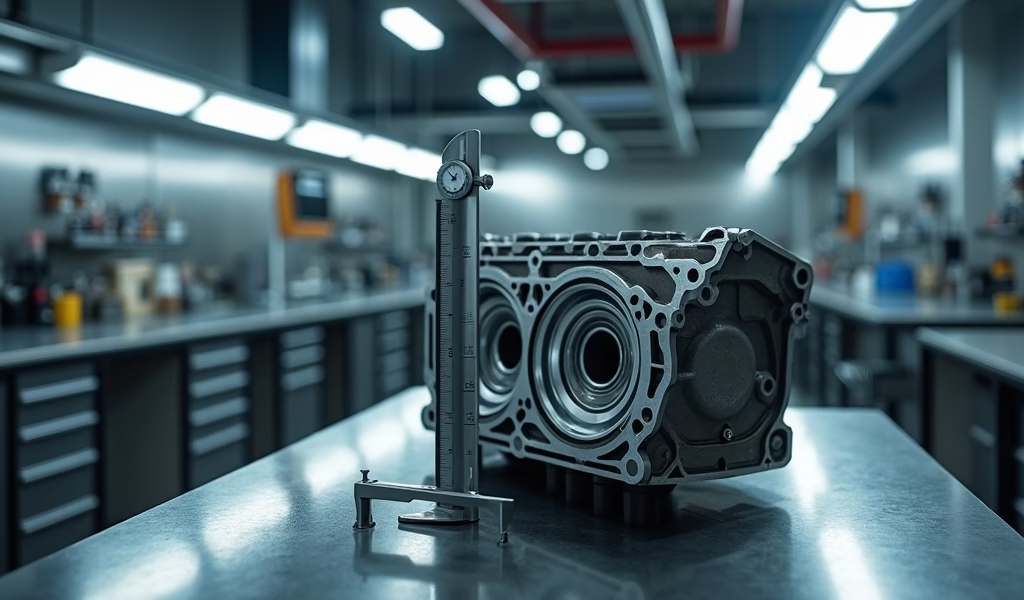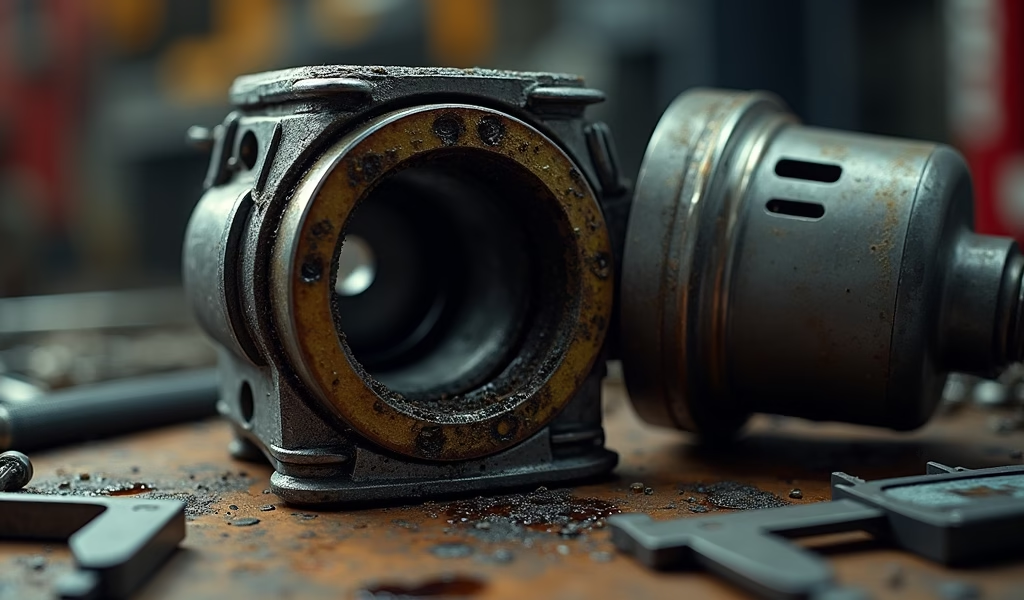Overview
This detailed guide explains ring groove depth specifications in engines, covering measurement techniques, the importance of proper specifications for engine performance, and maintenance tips including regular inspections, using appropriate tools, and knowing when to seek professional help. The article highlights common problems caused by incorrect specifications, provides preventive measures to protect ring grooves, and emphasizes that proper attention to these small but critical components can significantly extend engine life and prevent costly failures.
Table of Contents
- Understanding Ring Groove Depth Specification
- The Importance of Proper Ring Groove Depth Specifications
- How to Properly Measure Ring Groove Depth
- Tip 1: Perform Regular Inspections and Maintenance
- Tip 2: Use the Proper Tools for Measurement
- Tip 3: Know When to Seek Professional Assistance
- Common Problems Associated with Incorrect Ring Groove Depth
- Preventive Measures to Protect Ring Grooves
- Conclusion
- Frequently Asked Questions
Understanding Ring Groove Depth Specification
The ring groove depth specification is a critical measurement in engine construction and maintenance that often goes overlooked. As a mechanic with over 15 years of experience, I can tell you that this seemingly minor detail can make or break your engine’s performance. The ring groove refers to the machined channel in a piston where the piston rings sit, and its depth must be precisely specified to ensure proper engine function.
Think of the ring groove as a small but mighty component of your engine’s respiratory system. When correctly sized, it allows the piston rings to create the perfect seal against the cylinder wall, maintaining compression and preventing oil from seeping into the combustion chamber. Too shallow, and the rings won’t seat properly; too deep, and they may lose their ability to flex and seal effectively.
Over the years, I’ve seen countless engines suffer from improper ring groove specifications. The manufacturer’s guidelines exist for a reason – they’re not arbitrary numbers but carefully calculated dimensions that ensure optimal engine performance and longevity. Understanding these specifications is the first step toward proper engine maintenance and troubleshooting.
The Importance of Proper Ring Groove Depth Specifications
Proper ring groove depth specification isn’t just another measurement in a mechanic’s handbook—it’s fundamental to your engine’s health. When the groove depth is within specification, your engine can achieve optimal compression, minimize oil consumption, and maintain its power output over thousands of miles.
The relationship between the piston ring and its groove creates what we call “ring side clearance.” This small gap allows the ring to move slightly within the groove, which is essential for proper sealing as the piston travels up and down the cylinder. If the groove is too deep, excessive clearance leads to ring flutter at high RPMs, causing compression loss and increased blow-by (combustion gases escaping past the rings).
Conversely, insufficient depth creates too little clearance, which can cause the rings to seize in their grooves. This prevents them from properly seating against the cylinder wall, especially as temperature changes cause thermal expansion. The result? Compression leakage, oil consumption, and eventually, engine damage that could have been avoided with proper specifications.
During ring and pinion backlash adjustment or other drivetrain work, we often see the consequences of neglected ring groove maintenance. The ripple effects can extend throughout the entire engine, affecting everything from fuel efficiency to overall power output.

How to Properly Measure Ring Groove Depth
Measuring ring groove depth requires precision and the right tools. Before diving in, ensure you have a clean working environment. Any debris or oil residue can throw off your measurements by fractions of a millimeter—and in this game, fractions matter.
Start by thoroughly cleaning the piston. I recommend using a solvent specifically designed for engine parts and then allowing it to dry completely. Once clean, secure the piston in a soft-jawed vise to prevent damage to the delicate aluminum surfaces.
For accurate measurement, you’ll need a depth micrometer or a specialized ring groove gauge. Place the base of the instrument on the piston land (the flat area between grooves) and extend the measuring rod until it contacts the bottom of the groove. For the most accurate results, take measurements at several points around the circumference of the piston, as wear is rarely uniform.
According to Engine Builder Magazine, the standard tolerance for ring groove depth is typically within 0.001″ to 0.003″ of the manufacturer’s specification. This tight tolerance underscores the precision required when working with these components.
Compare your measurements against the manufacturer’s specifications, which can usually be found in the service manual. Remember, different engines and even different rings within the same engine (top, second, and oil control rings) may have different depth specifications.
Tip 1: Perform Regular Inspections and Maintenance
My first tip for managing ring groove depth specification is simple but often neglected: implement a regular inspection schedule. Don’t wait until you’re experiencing symptoms like excessive oil consumption or loss of power. By then, significant damage may have already occurred.
For high-performance or heavily used engines, I recommend visual inspections during routine maintenance intervals. Look for signs of carbon buildup, which can reduce the effective depth of the groove and cause rings to stick. Carbon buildup isn’t just unsightly—it’s like atherosclerosis for your engine, gradually restricting the proper movement of critical components.
During these inspections, pay special attention to the top ring groove, which endures the harshest conditions and highest temperatures in the engine. It’s almost always the first to show signs of wear or damage. If you notice any irregularities, such as widening, narrowing, or a “stepped” appearance to the groove, it’s time for more detailed measurements or professional evaluation.
Preventative maintenance should include using high-quality oils and filters appropriate for your engine and driving conditions. Clean oil reduces carbon formation and minimizes wear on both the rings and grooves. As research from SAE International has shown, proper lubrication can significantly extend the service life of these critical components.
Tip 2: Use the Proper Tools for Measurement
When it comes to ring groove depth specification, using the right tools isn’t just helpful—it’s essential. I’ve seen too many DIY mechanics try to eyeball measurements or use inadequate tools, only to end up with costly engine rebuilds down the road.
Invest in a quality depth micrometer with a range appropriate for your engine’s specifications. These precision instruments typically cost between $50-150, but they’re worth every penny when you consider the alternative—engine failure due to improper measurements. For those who work on engines regularly, consider a dedicated ring groove gauge, which is designed specifically for this purpose.
Digital calipers can provide reasonable accuracy for preliminary checks, but for final measurements, nothing beats a proper depth micrometer. Remember to calibrate your measuring tools regularly—even the best instruments can drift over time.
When measuring, always work in a well-lit area and consider using a magnifying glass or headband magnifier for better visibility. The difference between a serviceable groove and one that needs machining can be as little as a few thousandths of an inch—about the thickness of a human hair.

Tip 3: Know When to Seek Professional Assistance
My third tip might be the hardest for some DIY enthusiasts to swallow, but it’s crucial: know your limits and when to call in the professionals. Ring groove work often requires specialized knowledge and equipment that most home garages simply don’t have.
If your measurements show that a ring groove is out of specification, you have several options. For minor issues, specialized ring groove cleaners can remove carbon deposits without damaging the aluminum piston. However, if the groove is worn beyond specification, you’re looking at either replacing the piston or having the groove machined and fitted with an oversized ring.
This machining process requires precision equipment and experienced hands. A professional machine shop can accurately enlarge the groove to accept a specialty “file-fit” ring that’s thicker than standard. They can also evaluate whether this repair is appropriate or if piston replacement is the better option.
The cost of professional service might seem high initially—typically $75-150 per piston for groove machining—but it’s significantly less than the cost of engine damage from improperly fitted rings. Plus, reputable machine shops stand behind their work with guarantees that give you peace of mind.
Remember what my old mentor used to say: “The most expensive tool in your box is pride.” Sometimes, the wisest course is acknowledging when a job requires expertise beyond your own.
Common Problems Associated with Incorrect Ring Groove Depth
Throughout my career, I’ve encountered numerous issues stemming from incorrect ring groove depth specifications. Understanding these problems can help you recognize symptoms early and take corrective action before catastrophic failure occurs.
Excessive oil consumption is often the first noticeable symptom. When ring grooves are too deep or worn unevenly, the rings cannot properly seal against the cylinder wall. This allows oil to slip past and enter the combustion chamber, where it burns and exits through the exhaust. If you’re adding a quart of oil every 500-1,000 miles, ring groove issues could be the culprit.
Loss of compression and power follows closely behind oil consumption. As the seal between the combustion chamber and crankcase deteriorates, combustion pressure leaks past the rings instead of driving the piston downward. This manifests as reduced power output, especially under load, and can cause noticeable performance issues.
Carbon buildup accelerates when rings aren’t seating properly. The escaped combustion gases carry carbon particles that accumulate in the ring grooves, further compromising the ring’s ability to move and seal effectively. This creates a vicious cycle of worsening performance.
Perhaps most concerning is the potential for catastrophic ring failure. When rings cannot move properly in their grooves, they can break under the stress of operation. Ring fragments then cause scoring and damage to cylinder walls, potentially resulting in complete engine failure requiring a full rebuild.
Preventive Measures to Protect Ring Grooves
An ounce of prevention truly is worth a pound of cure when it comes to ring groove maintenance. Implementing these preventive measures can save you from costly repairs and extend your engine’s service life.
First and foremost, follow the manufacturer’s recommended oil change intervals and use the specified oil grade. Modern engines often have tighter tolerances that require specific oil formulations to protect components properly. Using the wrong oil can accelerate wear on both rings and grooves.
Avoid prolonged idle periods, especially when the engine is cold. Cold engines don’t reach optimal operating temperatures, which can lead to fuel dilution in the oil and carbon buildup in the ring grooves. When possible, allow your engine to reach full operating temperature during each drive.
For those with turbocharged or high-performance engines, be particularly vigilant about maintaining proper boost levels and fuel mixtures. Running too rich or experiencing detonation can rapidly damage ring grooves through excessive heat and pressure.
Consider periodic use of quality fuel system cleaners to reduce carbon deposits throughout the engine. While these won’t directly clean ring grooves, they help maintain overall combustion efficiency, which reduces the formation of carbon deposits in the first place.
If you’re rebuilding an engine or replacing pistons, take the time to properly break in the new components according to the manufacturer’s recommendations. This critical period establishes the initial wear patterns and seating of the rings, which can significantly impact long-term performance and durability.
Conclusion
Ring groove depth specification might seem like a minor detail in the grand scheme of engine maintenance, but as we’ve explored, it plays a pivotal role in your engine’s performance, efficiency, and longevity. The three tips we’ve discussed—regular inspections, using proper measurement tools, and knowing when to seek professional help—form the foundation of proper ring groove management.
Remember that engines are precision machines where tolerances measured in thousandths of an inch can mean the difference between reliable operation and catastrophic failure. Taking the time to understand and properly maintain ring groove specifications pays dividends in reduced operating costs, improved performance, and fewer unexpected breakdowns.
Whether you’re a DIY enthusiast or someone who prefers to leave engine work to the professionals, understanding the importance of ring groove depth specification empowers you to make informed decisions about your vehicle’s maintenance. After all, knowledge is the best tool in any mechanic’s arsenal.
I hope this guide has shed light on this often-overlooked aspect of engine maintenance. Your engine works tirelessly for you—returning the favor with proper care and attention to details like ring groove specifications will ensure many miles of trouble-free operation.
Frequently Asked Questions
What is the standard ring groove depth for most passenger vehicles?
Standard ring groove depth varies by engine manufacturer and design, typically ranging from 0.175″ to 0.200″ for top rings in passenger vehicles. Always refer to your specific engine’s service manual for exact specifications.
How often should ring groove depth be measured?
Ring groove depth should be measured during engine rebuilds or whenever pistons are removed from the engine. For high-performance engines, consider measurement every 25,000-50,000 miles.
Can worn ring grooves be repaired?
Yes, moderately worn ring grooves can be machined to accept oversized “file-fit” rings. Severe wear, however, typically requires piston replacement.
What causes ring grooves to wear prematurely?
Premature wear is typically caused by contaminated oil, improper ring selection, detonation, or overheating. Regular maintenance with clean, quality oil helps prevent early wear.
How much does ring groove repair typically cost?
Professional machining of ring grooves typically costs $75-150 per piston. Complete piston replacement, if necessary, can range from $250-500 per piston including parts and labor.

